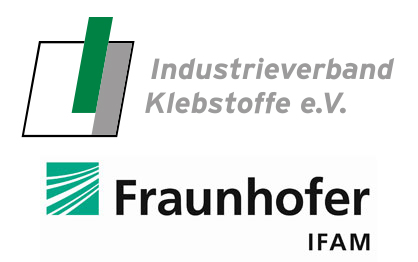4.6.1 Adhesives which harden on cooling
Adhesives which harden on cooling: Hotmelts
General description:
- One-component adhesives
- Adhesive based on thermoplastics (can be melted)
- Hardening on cooling
A wide range of thermoplastic materials are available as hotmelts.
The most important are:
- Polyolefins
- EVA
- Polyesters
- Polyamides
- Polyurethanes
- Thermoplastic natural rubbers (butyl rubbers)
- Acrylates
- (Bitumen)
- (Wax)
Physical properties in the as-supplied state:
- Solid rods or granulate; viscous to paste-like once melted
Processing
- Semi-automated or fully automated processing
- For preferred equipment contact the adhesive manufacturer
- Processing temperature: room temperature; adhesive application as a melt (temperature over 100°C)
- Normal contact pressure
- Adhesive film thickness: 0.2 – 2 mm
- 1-C processing
- The adhesive is solid at room temperature; as-supplied state: blocks, rods, granulate, powder, film
- Application: heat and apply as a melt, or apply as a solid and then heat
- Very rapid cohesion development (inner strength) on cooling
- Detachable by heating the adhesive
- Secure until the bonded joint has reached hand strength
- Take relevant measures for health and safety at work and environmental protection (General: see Section 7; Details: see safety data sheet)
Typical properties of the hardened adhesives:
- Free of solvents and monomers (individual building blocks of the polymers)
- Medium to high strength in the bonded joint
- Differing flexibility depending on the thermoplastic
- Temperature for continuous use lies below the softening temperature
- Can be swollen
- Tend to undergo creep
Typical processing parameters for selected hotmelts:
| Base material | Softening range [°C] | Processing temperature [°C] |
|---|---|---|
| Polyamides | 95 – 195 | 120 – 240 |
| Polyesters | 50 – 230 | 150 – 240 |
| Ethylene vinyl acetate | 80 – 200 | 140 – 200 |
| Polyolefins | 85 – 160 | 120 – 200 |
| Polyurethanes | 90 – 200 | |
| Natural rubbers | 80 – 140 | 130 – 200 |
| Ethyl vinyl acetate copolymer (EVA) | 130 – 200 |
Points to heed:
- The substrates must be acclimatised prior to bonding. Important for metallic substrates (high thermal conductivity): risk of shock-induced hardening
- The processing time depends on the thermal conductivity of the substrate
- Damage to the substrates by high temperatures must be avoided
If you have questions about the product then see the technical data sheet or contact the adhesive manufacturer



